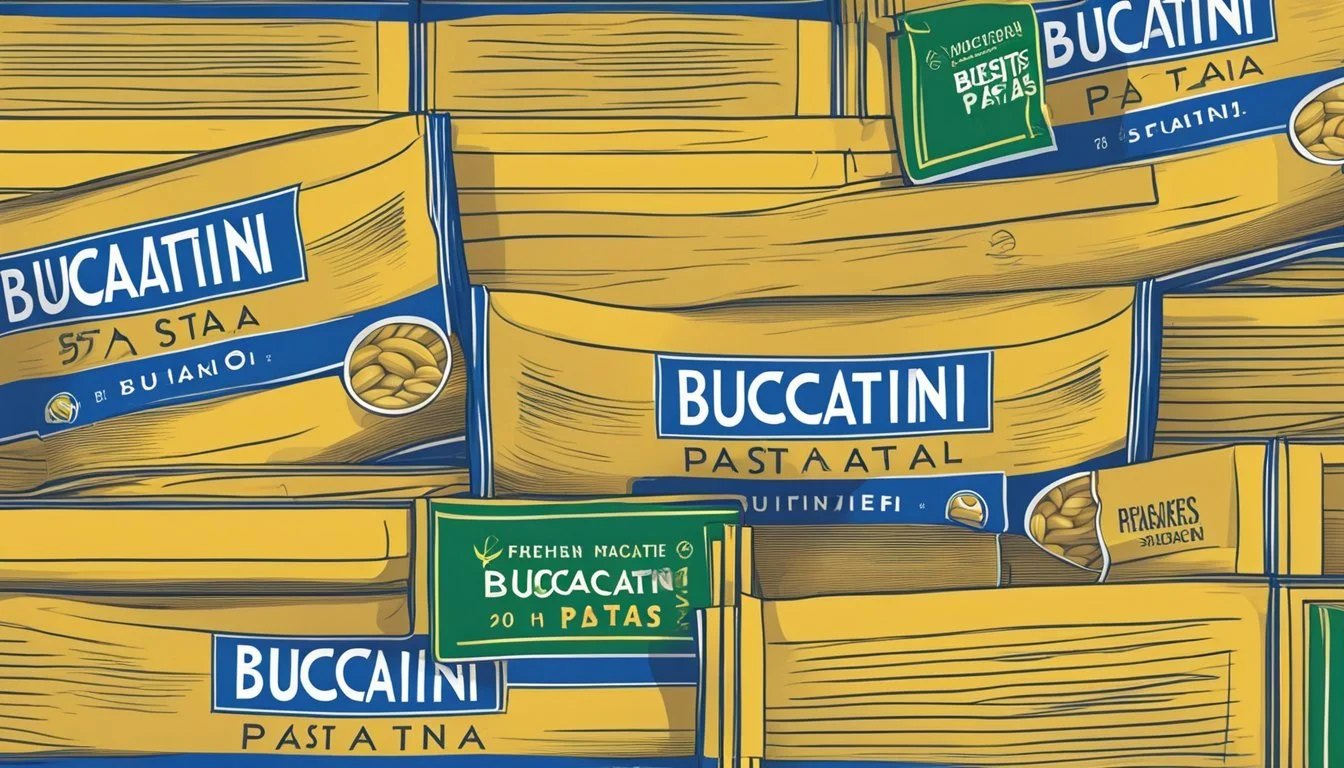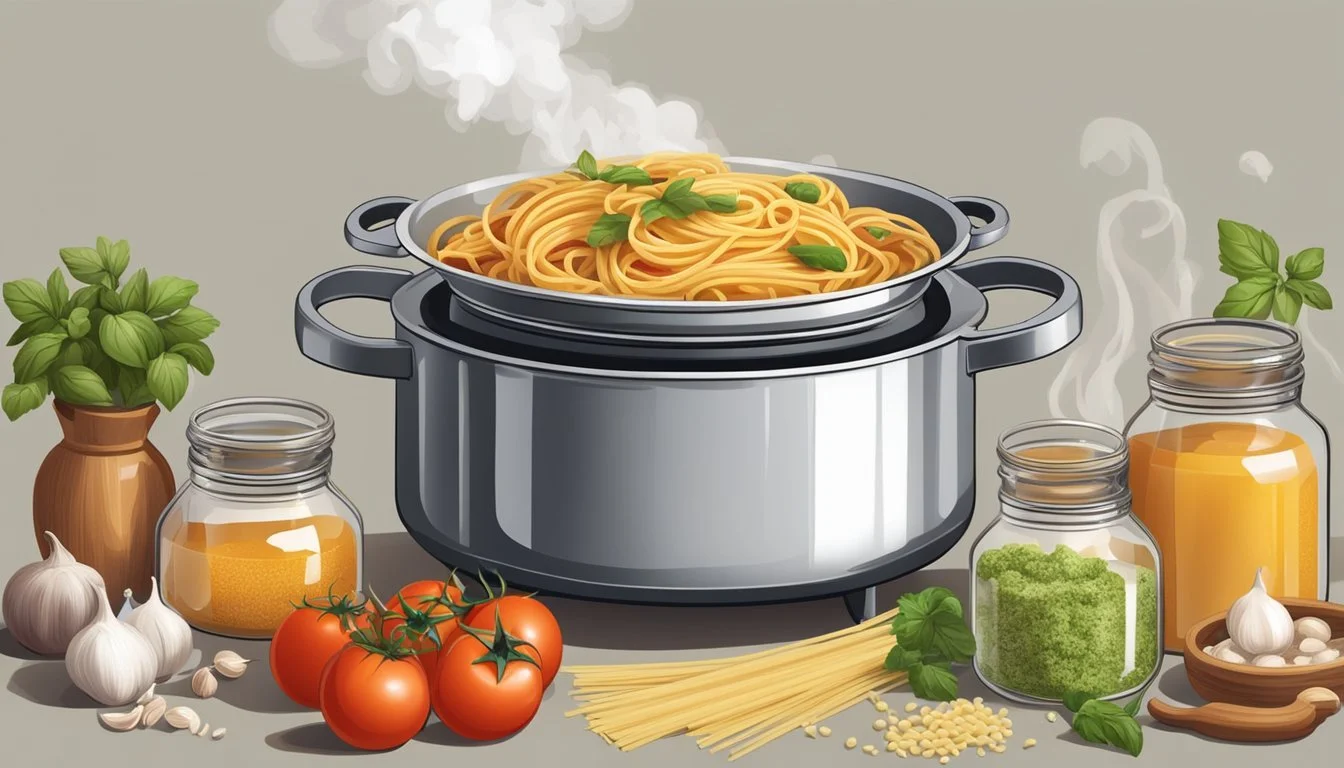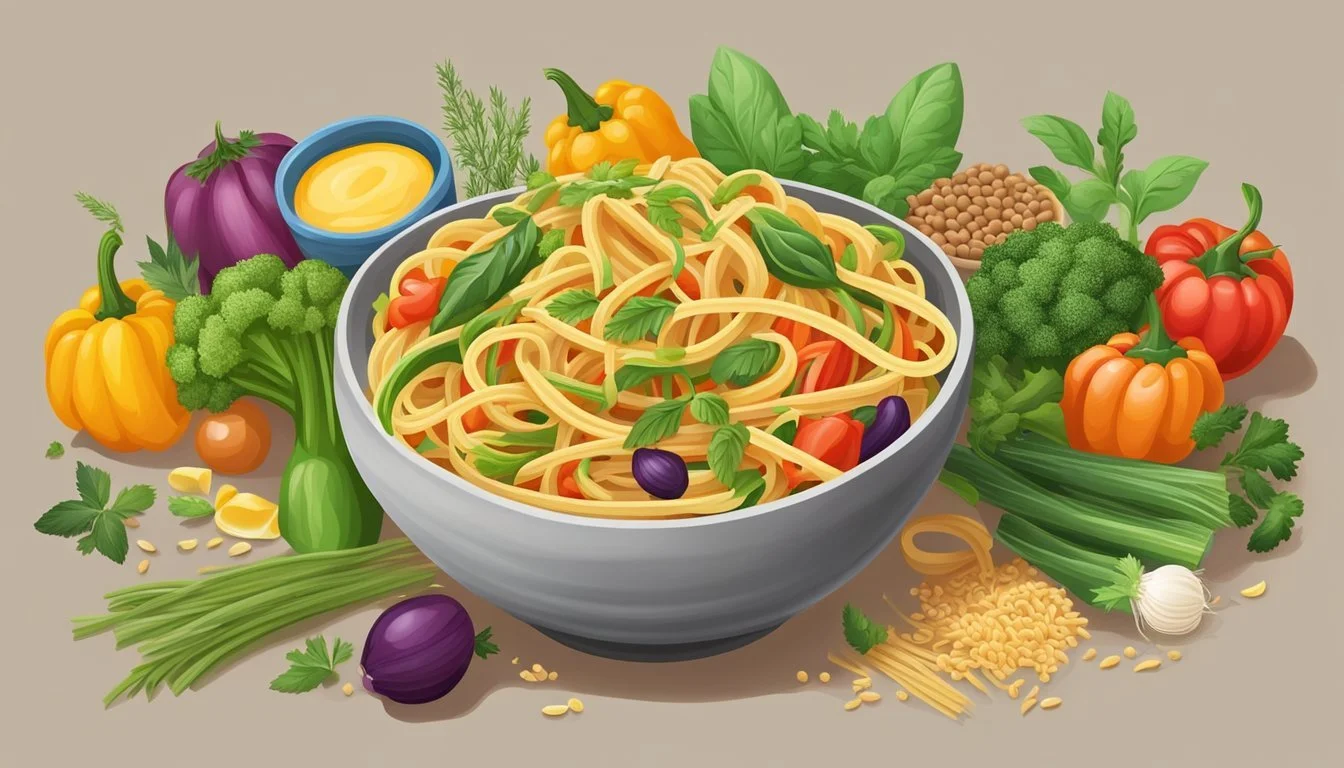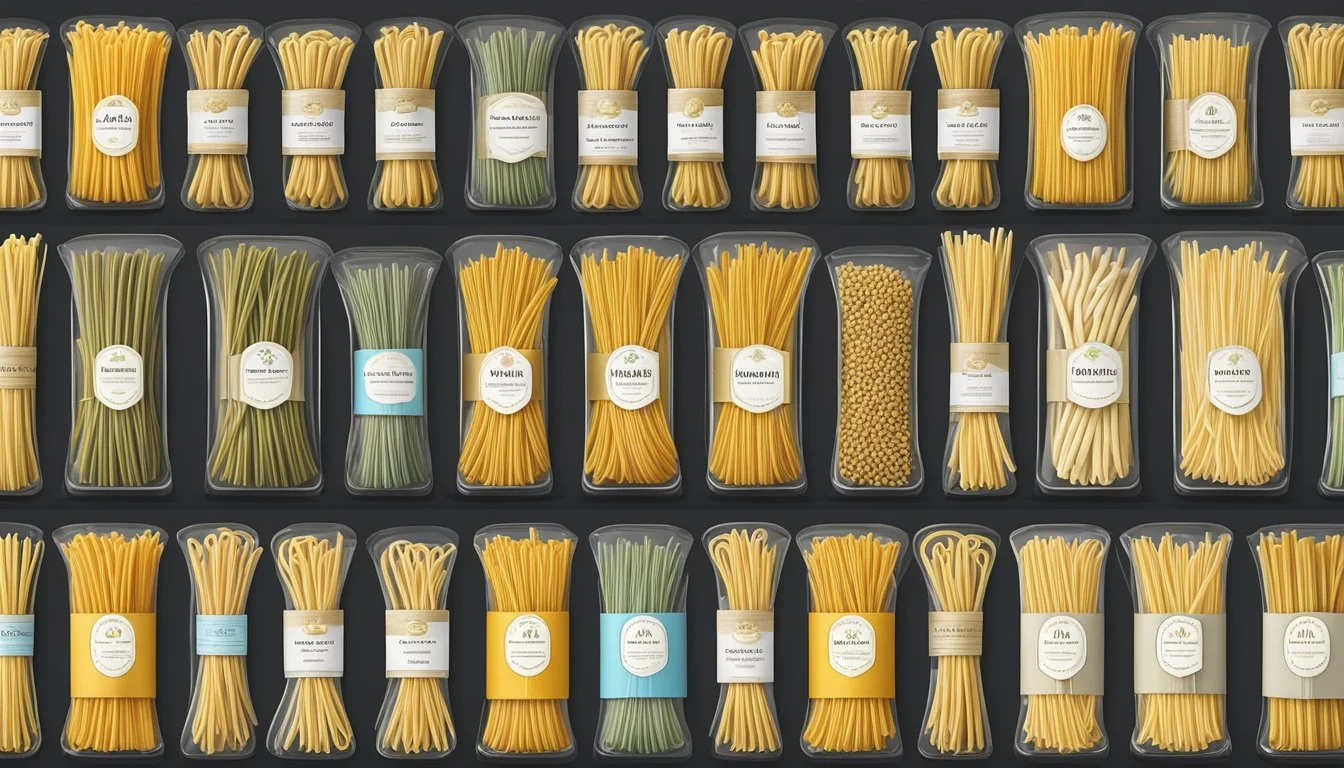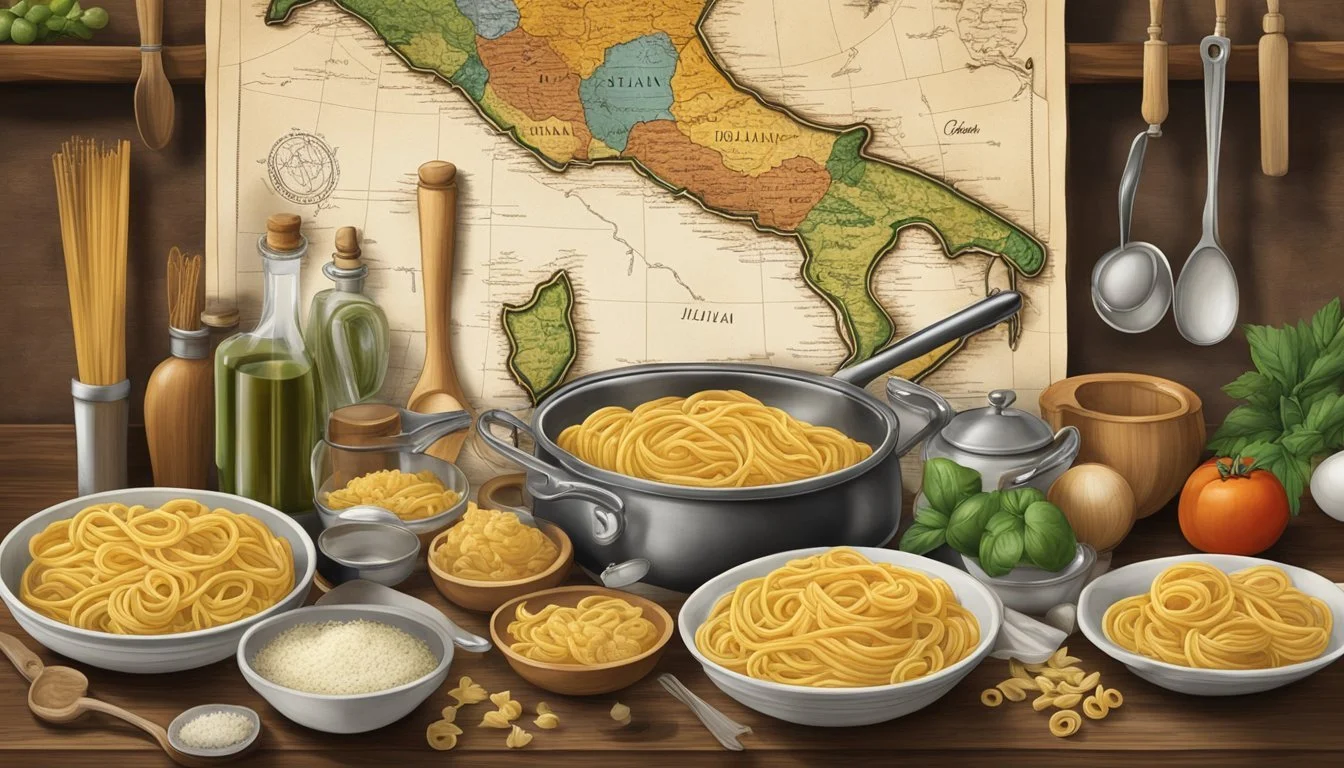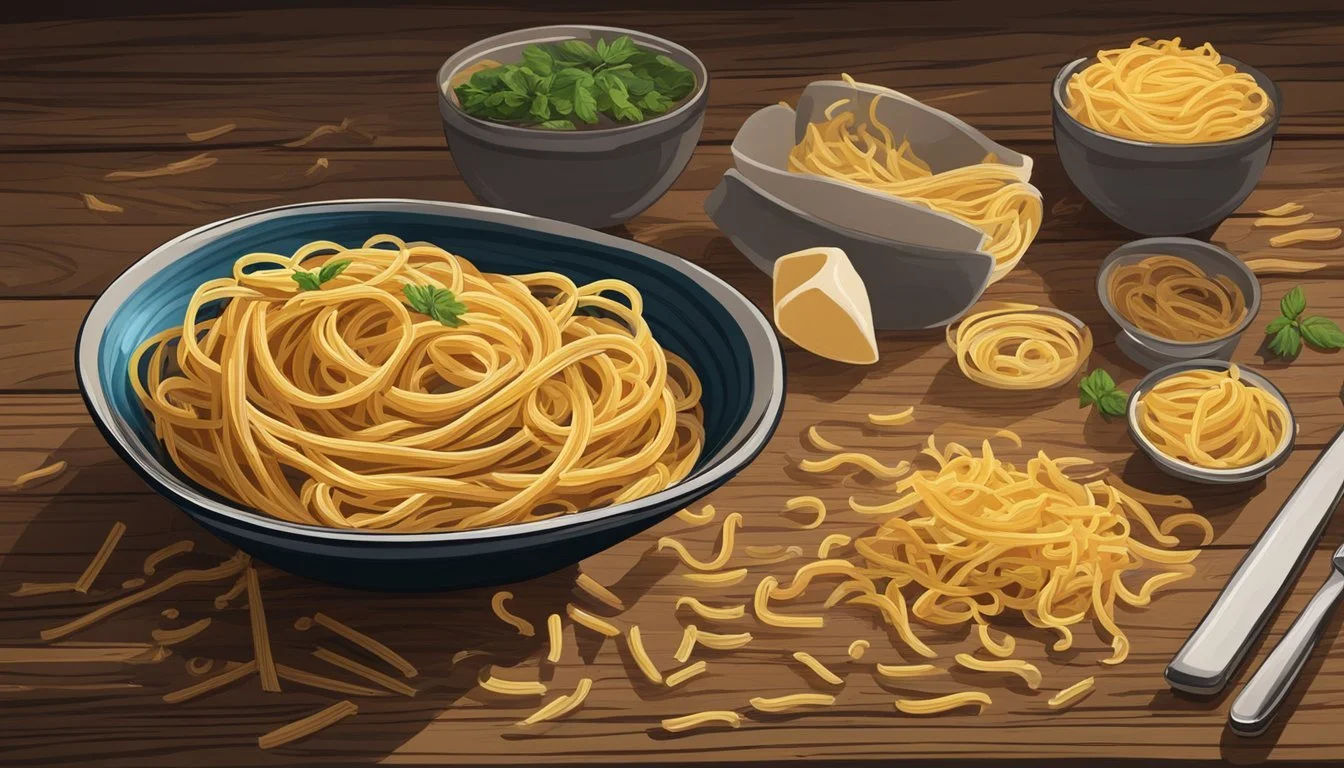How Long Does Bucatini Pasta Last?
Shelf Life and Storage Tips
Bucatini, a distinctive type of Italian pasta (What wine goes well with pasta?), is cherished for its hollow, straw-like shape that effortlessly pairs with a variety of sauces. As with other durum wheat pasta varieties, bucatini boasts an impressive shelf life, allowing it to be a staple in pantries around the world. Durability and longevity are hallmarks of dry pasta, and bucatini is no exception, offering a reliable base for many meals without a pressing concern for spoilage.
Understanding the storage and shelf life of bucatini involves recognizing the qualities of dry pasta. Dried bucatini has a low moisture content, making it less prone to bacterial growth and spoilage. Properly stored in a cool, dry place, bucatini pasta retains its quality for an extended period. While it does not last indefinitely, pasta's shelf life typically exceeds its best-by date if storage conditions are ideal, making it a convenient and lasting option for future culinary endeavors.
What Is Bucatini Pasta
Bucatini pasta is a distinctive variety of Italian pasta with a characteristic tubular shape. It stands out from other pasta shapes due to its hollow center, running the entire length of the long noodle.
Unique Characteristics
Bucatini boasts a hollow center, which not only differentiates it from spaghetti but also impacts the way it interacts with sauces. This hollow core allows sauces to fill the inside of the pasta as well as coat the exterior, providing a unique texture and sauce-to-pasta ratio. Bucatini is usually made from durum wheat flour, ensuring it holds up well during cooking and maintains a firm, satisfying bite.
Common Uses
Traditionally, bucatini pasta is used in Italian cuisine, often served with robust and hearty sauces. It works especially well in dishes like Bucatini all'Amatriciana, where the sauce clings to and fills the pasta. Its versatile nature makes it suitable for a variety of recipes, standing in for other long pastas such as spaghetti or fettuccine when a more substantial noodle is desired.
Storing Bucatini Pasta
When it comes to maximizing the shelf life of bucatini pasta, proper storage is essential, whether it's dried, freshly made, or cooked.
Uncooked Bucatini Storage
Uncooked bucatini pasta, particularly the dried variety, should be kept in an airtight container in a pantry or another cool, dark place to extend its freshness. Optimal conditions include a steady temperature and low humidity; this prevents deterioration and keeps the pasta from absorbing odors. Generally, dried bucatini pasta can maintain quality for up to two years when stored correctly. However, for best quality, one should aim to consume it within one year, as pasta can gradually lose its flavor over time.
Storage Tips for Dried Bucatini:
Keep in a cool, dry place away from light.
Use an airtight container to protect from humidity.
Check the expiry date on packaging for guidance.
Cooked Bucatini Storage
For bucatini that has been cooked, refrigeration is necessary for food safety. The pasta should be stored in an airtight container and placed in the refrigerator to significantly slow down the growth of bacteria. Cooked bucatini pasta typically lasts 3-5 days in the refrigerator before quality and safety become concerns.
Refrigeration Guidelines for Cooked Bucatini:
Store within two hours of cooking to ensure freshness.
Keep in a tightly-sealed container to maintain moisture.
Remember, fresh pasta (how long does fresh pasta last?) has a shorter shelf life than dried pasta due to the presence of moisture, which can lead to more rapid growth of bacteria and mold. Fresh bucatini pasta, if not cooked immediately, should only be kept in the refrigerator for a couple of days and can be stored in the freezer for up to one month.
Shelf Life of Bucatini Pasta
With a variety of pasta types on the market, bucatini pasta's shelf life varies significantly depending on its form. It's important to differentiate between dry and fresh bucatini to ensure optimal quality and safety.
Determining Freshness
Fresh bucatini pasta has a limited shelf life, typically 4-5 days past its "best by" date when stored in the refrigerator. Signs of spoilage include changes in texture or color, an off-odor, or any visible signs of mold. These indicators suggest that the pasta should not be consumed to avoid foodborne illness.
Expiration of Dry Pasta
On the other hand, dry bucatini pasta possesses a much longer shelf life due to its low moisture content, which inhibits bacterial growth. Properly stored in a cool, dry place such as a pantry, unopened dry bucatini pasta remains good for approximately 1-2 years beyond its "best by" date. Once opened, it's best consumed within 1 year. To maintain its quality and extend its shelf life, keep the pasta in an airtight container to prevent exposure to pantry moths and other contaminants.
Cooking Bucatini Pasta
When cooking bucatini pasta, one must carefully consider the boiling requirements to achieve the desired al dente texture. The process involves specific steps and timings to ensure the pasta is cooked perfectly.
Boiling Requirements
To cook bucatini pasta successfully, one needs a large pot of boiling water. The general rule is to use about 4 to 6 quarts of water per pound of pasta to provide ample space for the noodles to move and cook evenly. A generous amount of salt, typically 1 to 2 tablespoons, should be added to the water, as it seasons the pasta and enhances its flavor during cooking. The water should be at a rolling boil before the pasta is added to ensure it starts cooking immediately.
Boiling Guidelines:
Water: 4-6 quarts per pound of bucatini
Salt: 1-2 tablespoons
Boil: Full rolling boil
Achieving Al Dente Texture
The term al dente refers to pasta that is cooked through but has a slight bite to it. Bucatini, a tubular pasta, requires a careful eye on the clock to achieve this texture. The optimal cook time usually falls between 8 to 12 minutes. However, one should always check the pasta a couple of minutes before the lower end of the suggested cooking range and taste for the preferred doneness. Stirring occasionally prevents the noodles from sticking together and ensures even cooking.
Monitoring Bucatini for Al Dente:
Start checking: 2 minutes before the lower suggested cooking time
Expected cook time: 8-12 minutes
Stirring: Occasional to prevent sticking
Once one determines that the bucatini has reached al dente texture, it should be drained immediately to stop the cooking process, reserving some of the pasta water if the sauce requires it.
Popular Bucatini Recipes
Bucatini pasta stands out for its unique texture and ability to pair excellently with various sauces. Here are some classic recipes that highlight bucatini’s versatility.
Bucatini All'Amatriciana
Bucatini All'Amatriciana is a robust Italian pasta dish featuring a spicy tomato sauce enriched with guanciale (cured pork cheek) and Pecorino Romano cheese. Originating from the town of Amatrice, the sauce commonly includes olive oil, chili peppers, and sometimes onions, cooked until the flavors meld beautifully. It's a testament to the simplicity and depth of Italian cooking.
Bucatini Alla Carbonara
The Bucatini Alla Carbonara recipe is a testament to Italian culinary excellence, combining simple ingredients to create a rich and creamy dish without using cream. The traditional carbonara sauce consists of eggs, Pecorino Romano cheese, pancetta or guanciale, and freshly ground black pepper. The eggs and cheese form a silky coating on the bucatini, while the pancetta adds a savory depth of flavor.
Vegetarian Variations
Vegetarian variations of bucatini dishes offer all the satisfaction without the meat. One can replace traditional meat like pancetta with vegetables, beans, or peas to create a healthier, yet equally savory, dish. Tomato-based sauces (What wine goes well with tomato-based sauces?) or simple olive oil with garlic and pepper—commonly referred to as "aglio e olio"—are excellent for coating the bucatini. Vegetarian versions often include a generous addition of cheeses like Pecorino or Romano to enhance flavor.
Healthy Aspects of Bucatini
Understanding the health benefits of bucatini begins with examining its nutritional makeup. This pasta, when made from durum wheat flour, can offer a satisfying source of energy and dietary fiber.
Nutritional Profile
Bucatini pasta's primary component is carbohydrates, which provide the body with glucose, its favored source of fuel for daily activities. A standard serving of bucatini typically contains a significant amount of these carbohydrates, essential for energy.
The pasta can also be a source of dietary fiber, especially if one opts for whole wheat bucatini. Fiber aids in maintaining digestive health, can help with managing blood sugar levels, and provides a feeling of fullness, which may be beneficial for weight management.
In terms of protein, bucatini offers a moderate amount, essential for the repair and growth of tissues. While pasta may not be a high-protein food on its own, it often serves as a foundation for protein-rich sauces and toppings.
When fortified or made with enriched flours, bucatini can be a source of minerals such as iron, which is crucial for transporting oxygen throughout the body.
If bucatini is made with whole wheat flour (how long does whole wheat flour last?), it not only contains more fiber but also additional nutrients compared to its refined counterparts, making it a healthier option for individuals looking to maximize the nutritional value of their pasta dishes. Whole wheat pasta can contribute to a balanced diet rich in complex carbohydrates, fiber, and essential micronutrients.
Tips for Perfect Bucatini
Achieving the perfect Bucatini dish involves picking premium ingredients and understanding the ideal sauce pairings. Quality of ingredients and sauce choice can elevate the dish significantly.
Choosing The Right Ingredients
One should look for high-quality durum wheat flour when selecting Bucatini pasta as it ensures a delightfully al dente texture and a robust foundation for your dish. For homemade pasta, the ideal ratio of flour to water or egg is crucial. Durum wheat, known for its high protein content, helps in forming a strong gluten network, which is essential for the perfect bite.
When cooking Bucatini, one should never underestimate the importance of pasta water. Salted pasta water not only flavors the pasta internally but also helps sauce cling to it due to the starches released during cooking. Using the right amount of salt is important; a good rule of thumb is about 1.5 tablespoons of salt for every pound of pasta.
Sauce Pairing
The unique structure of Bucatini, with its hollow center, calls for a sauce that can adhere well to the exterior while also filling the interior of the pasta. Rich, thick sauces complement this pasta shape best. For instance, when one pairs it with a classic Amatriciana sauce, made with sautéed pancetta, onions, and a spicy tomato base, the sauce penetrates the pasta, providing flavor in every bite.
For a simpler approach, one can toss Bucatini in olive oil with a touch of garlic, red pepper flakes (how long do red pepper flakes last?), and freshly grated Parmesan to let the pasta truly shine. In each scenario, the pasta should be finished in the sauce for a minute or two to ensure it absorbs flavor and the sauce adheres to its ridges.
To summarize, the dedication to selecting proper ingredients and pairing the pasta with a complementary sauce will reward one with a perfectly executed Bucatini dish.
Food Safety and Bucatini
When it comes to food safety, bucatini pasta, like other pasta varieties, requires proper handling and storage to prevent foodborne illness. The focus on this elongated, tubular pasta is to maintain its quality while ensuring it poses no health risks.
Preventing Foodborne Illness
To prevent foodborne illness associated with bucatini, it's important to follow safe food handling practices. Leftovers should be promptly refrigerated within two hours of cooking to limit bacterial growth. Bucatini is best enjoyed when it's properly cooked to al dente, which typically takes about 8 to 12 minutes in boiling water.
Storing Cooked Bucatini:
Place cooked bucatini in shallow airtight containers or resealable plastic bags.
Properly stored, cooked bucatini will last for 3 to 5 days in the refrigerator.
Reheating:
Thoroughly reheat leftovers to an internal temperature of 165°F (74°C) to ensure safety.
Note on Dry Pasta:
Uncooked bucatini pasta can last up to two years if kept in a cool, dry pantry.
Keep uncooked pasta away from moisture to avoid spoilage.
Implementing these guidelines will help maintain the safety and quality of bucatini pasta, whether it's freshly cooked or enjoyed as leftovers.
Specialty Bucatini Varieties
In the realm of bucatini pasta, specialty varieties cater to diverse dietary needs and gastronomic preferences. These include gluten-free alternatives for those with dietary restrictions, as well as artisanal and homemade versions for enthusiasts seeking a more authentic pasta experience.
Gluten-Free Options
For individuals with celiac disease or gluten sensitivity, gluten-free bucatini are available. These varieties are typically made with alternative flours such as:
Rice flour (how long does rice flour last?)
Corn flour (how long does corn flour last?)
Quinoa flour (how long does quinoa flour last?)
They aim to mimic the texture and flavor of traditional bucatini, enabling everyone to enjoy this classic pasta shape.
Artisanal and Homemade
Artisans and home cooks often create homemade bucatini using pasta makers, producing a genuinely fresh product. Key characteristics of artisanal and homemade bucatini include:
Select, high-quality ingredients
Traditional production methods
Potential customization of flavors
Pasta makers, both manual and electric, facilitate the creation of bucatini at home, giving pasta enthusiasts the ability to craft their versions of this beloved pasta.
Creative Ways to Enjoy Bucatini
Bucatini pasta provides a unique dining experience with its thick, straw-like shape that perfectly captures sauces.
Substitutes and Alternatives
Spaghetti: A classic alternative, spaghetti, though thinner and without the hollow center, serves as an easy substitute for bucatini and pairs well with a variety of sauces.
Rigatoni: For those who enjoy the heft of bucatini, rigatoni offers a similarly satisfying bite with its ridges that cling to sauces.
Spaghettoni: As a thicker version of spaghetti, spaghettoni can replace bucatini to create a delightful textural experience.
Penne: Although it’s cut into short tubes, penne can stand in for bucatini, especially in baked pasta dishes where its edges crisp up nicely.
Linguine: While flat and not hollow, linguine can mimic the luxurious feel of bucatini in a creamy or oil-based sauce.
Bucatini as a pasta shape is fun to eat and versatile. Each substitute offers a way to enjoy the robust sauces traditionally served with bucatini, ensuring that the essence of the dish remains, even with a different pasta shape. These alternatives keep the meal exciting while accommodating for bucatini’s availability or diner preferences.
Historical and Cultural Context of Bucatini
One of the quintessentially Roman pastas, bucatini, has secured its place in Italian culinary tradition, combining the richness of durum wheat semolina with the timeless designs of pasta-making machinery. Its presence in the Lazio region, especially Rome, often evokes the local specialties like cacio e pepe and carbonara.
Bucatini in Italian Cuisine
Bucatini pasta, a hallmark of Italian cuisine, originated from the region of Campania and has become a staple in Lazio. Durum wheat semolina is its main ingredient, giving bucatini a firm texture that pairs well with robust sauces. The pasta shape is characterized by its thickness, similar to spaghetti, but with a distinguishing feature: a hole running through the center. This design is not merely for aesthetics but serves a practical purpose. During the cooking process, the hole in each strand allows water to flow through, ensuring even cooking - a clever innovation attributed to pasta-making machines. Bucatini's role in Italian dishes is significant; it is often the base for classics such as cacio e pepe and carbonara, where its hollow structure perfectly traps and carries the sauce with each bite.
While whole wheat versions of bucatini are available, they are less common than those made from durum wheat semolina. The durability of bucatini from durum wheat allows it to maintain an al dente texture, a quality highly desired in Italian pasta. The essence of bucatini lies not just in its taste but also in its reflection of Italian culture - a testament to innovation in pasta-making and a beloved component of the culinary landscape in Italy.
Pairing Wines with Bucatini Dishes
When selecting a wine to accompany bucatini dishes, one must consider the richness of the pasta and the ingredients in the sauce. The goal is to choose a wine that complements these elements without overpowering them.
Selecting Complementary Wine Varieties
Bucatini is a thick, spaghetti-like pasta with a hollow center, known as a good carrier for sauce. Traditional sauces for bucatini, like all'Amatriciana, feature bold flavors such as tomatoes, cured pork, and pecorino cheese. To match the acidity of the tomatoes and the savory depth of the meat, one might opt for an Italian red wine such as a Sangiovese or a lighter red like a Montepulciano d'Abruzzo. These wines provide a balance to the dish, with the acidity complementing the tomato-based sauce while having enough body to stand up to the guanciale or pancetta.
For those preferring white wines, select a variety that can cleanse the palate, yet provide its own stand-out flavor. A crisp dry white wine such as a Trebbiano or Verdicchio could pair well, especially if the bucatini dish is on the lighter side or includes seafood. These wines offer a refreshing counterpoint to the richness of bucatini, with sufficient acidity to harmonize with the dish's components.
In each case, the chosen wine should elevate the bucatini dish, creating a harmonious dining experience that accentuates the flavors of the pasta and sauce.
Concluding Thoughts on Bucatini
When discussing the shelf life and attributes of bucatini pasta, it's evident that it holds its own as a unique variety in the realm of long pasta. Bucatini—characterized by its tubular shape with a hole running through the center—offers a distinctive dining experience that goes beyond that of traditional spaghetti.
In terms of longevity:
Uncooked bucatini can be stored in a cool, dry place and remain edible for up to two years.
Cooked bucatini should be kept in the refrigerator and is best consumed within two to three days.
This pasta's robust structure allows it to retain its al dente texture well, making it not only fun to eat but also a versatile companion to a myriad of sauces. Its channel through the center enables bucatini to embrace and hold onto sauces, ensuring that each bite is as flavorful as possible.
Due to its thickness, bucatini requires a slightly longer cooking time compared to other long pasta types. However, the wait is a small trade-off for the delightful taste and textural complexity it brings to the table.
As a staple in Italian cuisine, bucatini effortlessly adapts from simple weeknight meals to more elaborate culinary creations. It stands as a testament to the ingenuity of Italian pasta-making and a tribute to the country's rich food tradition. Overall, for those seeking a pasta that is substantial, gratifying, and a joy to the senses, bucatini makes an excellent choice.

